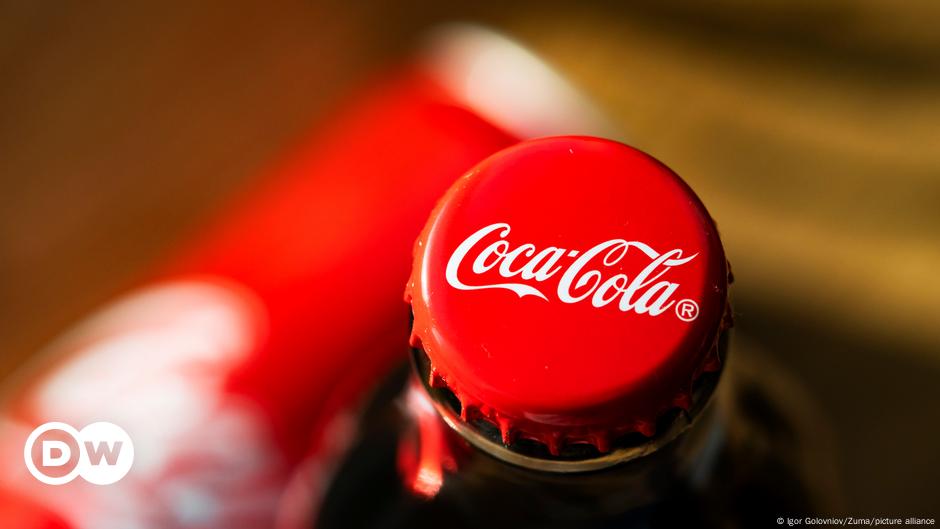What you need to know
- Coca-Cola Clorate Misses Drinks due to contamination
- Chlorine is a chlorumor in food and drinks as a by -product
- Consumption is less for modern health risk in children
Time for Coca-Cola may not be worse: After announcing the arrival of a new taste for the US market-coola orange cream, the international company coming in February was forced to remember its drink Was, which was distributed in Northwestern Europe. ,
Coca-Cola, Sprite, Fanta, Fuse Tea, Minor Maid, Nalu, Royal Bliss and Tropico can detected “extremely high chlorate materials” in bottles and bottles, the company said. A press statement, January 27, 2025,
How to know that your product is affected: See for the production code from 328 GE to 338 GE.
What are the chlorates?
Chlorumates are salts of chloric acid – a compound that contains chlorine and oxygen, known as oxoed or oxysid.
They can occur as a by-product of chlorine-based disinfectant used in food and beverage production, including agriculture. Search disinfectant can be used to clean water systems, but can release chlorate residues in products
Sodium and potassium chlorate pesticides use bees, but are now prohibited in the European Union.
In the US, meanwhile, sodium chlorate is affected. A memorandum published in 2020 by the US Environmental Protection Agency stated that “is not a matter of concern at this time” in pesticides.
How dangerous is it to consume chlorate?
Coca-Cola Company said in its press statement “[l]Clorate OW levels are found in common foods and beverages, such as fresh fruits and vegetables, diary products, and drinking water, “but that” “but that” but “[i]Ndependent expert analysis leads to conclusion that any risk for consumers is very low.
However, often “in a quoted study” on “”[r]ISKS for public health related to the presence of chlorate in food“(2015), European Food Safety Authority (EFSA) said that chronic exposure for chronic exposure can prohibit iodine intake:” Chronic exposure is a matter of concern with mild or moderate iodine deficiency in especially younger groups Is. ,
When iodine intake is interrupted in humans, it can cause temporary changes in thyroid hormone levels in high -risk groups. But the intake of iodine through the chlorate is “reversible” according to the German Federal Institute for Risk Assessment (BFR).
After assessing the results of laboratory tests on non-human animals, EFSA estimated a tolerant daily intake (TDI) of 3 micrograms (micrograms) of body weight for humans.
BFR says that one-time intake for human health is considered non-real “. However, we are ready to say whether “once intake” is similar to a can or bottle in this example because Coca-Cola has not said how much of the chlorate was revealed in the can or bottles.
Where and where are the chills found?
BFR states that the chlorate reveals deep frozen vegetables, fruit juices and letters and herbs “often” beats. It states that chlorate thesis can be found in foods, which focuses the washing of vegetables with the weakening of the juice and contaminated water due to “glazing” techniques.
Hence the chlorate is found in drinking water. For EFSA, drinking water is the main source of chlorate in the diet, possibly contributing up to 60% of chronic chronic exposure for infants.
The WHO has proposed a maximum of 0.7mg chlorate per liter so that it is safe to consume.
Edited by: Fred Scholor
Selected Source:
Coca-Cola Product Recall: Raple de Productions Day Coca-Cola Europeric Partners 27/2025 https://www.coca-com In the world)
Rapel de Producits de Coca-Cola Europeric Partners Belux https://www.coca-cola.com/be/fr/fr/fr/media-CETER/RAPPEL- CCCEP (in French)
Risk to public health related to the presence of chlorate in food, European Food Safety Authority https://efsa.onlinelibrary.wiley.com/doi/EPDF/10.2903/j.fsa.4135
Question about chlorate in food, German Federal Institute for Risk Assessment https://www.bfr.bund.de/en/frequantly_asked_asked_about_chlorate_clorate_clorate_food-204084.html






Leave a Reply